2021-06-03

Hi FLAGHUNTER...
The first test matches are on TV and the world is getting into the soccer mood. How do things look for you? Are you prepared for the start of Task 1 in a few hours?
Here's the reminder for your ToDo - starting from 04 June:
Task 1: The first thing you need is your soccer field... To green the required area you need to deploy 72 Green Flags. This is how you get the right size with the distance rules among your Green Flags (yes the rules in professional sports are strict).
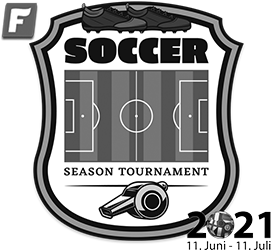
Now it's 'your move'! You can easily complete the challenges, and instead of a medal you will receive a badge for each successfully completed task! As soon as you have successfully completed it, the next task will become visible and will count from the given date. The entire FLAGSTACK EM ends on 11 July 2021 at 23:59 (time zone FHQ/Europe/Berlin).
Let the green grow and capture the flag...
Your team FLAGSTACK
2021-06-01
Here is a look at the top 10 of the overall ranking for our statistics fans:
|
Rank |
Name |
Towers |
Country |
Fraction |
Members |
Credits |
|
|
1 |
Kent and the Lockdown Flags |
557 |
|
|
5 |
246,685 |
|
|
2 |
The Fantastic Five |
497 |
|
|
5 |
218,877 |
|
|
3 |
FlagstackFanatics |
325 |
|
|
5 |
153,404 |
|
|
4 |
Sic Mundus Creatus Est |
412 |
|
|
5 |
151,984 |
|
|
5 |
Tower Power East |
310 |
|
|
5 |
141,538 |
|
|
6 |
FHQ Flaghunter |
160 |
|
|
5 |
104,517 |
|
|
7 |
Knight Riders |
176 |
|
|
5 |
93,849 |
|
|
8 |
FlagTerriers |
234 |
|
|
5 |
90,614 |
|
|
9 |
Psychos |
186 |
|
|
5 |
86,870 |
|
|
10 |
Tower Power North |
169 |
|
|
5 |
84,701 |
And here's the fraction ranking of Team Battle #66, and we're delighted with the great overall performance from all players:
|
Rank |
Name |
Towers |
Teams |
Credits |
Average |
|
|
1 |
|
The Cartel of Flag Seeker |
1906 |
21 |
913,373 |
43,494 |
|
2 |
|
The Alliance of Flag Keeper |
1871 |
24 |
827,714 |
34,488 |
|
3 |
|
The Syndicate of Flag Hunter |
1920 |
24 |
817,616 |
34,067 |
All details about the team and fraction rankings can be found with a quick click.
You can find all detailed information about the credit distribution on the official FLAGSTACK help page for Team Battles.
You are enthusiastic about Team Battles, all the excitement and variety and especially about your personal advantages through the great prizes? Than you know what you have to do: Tell all your friends about it and create a new team - or even two - because after a short recovery time the next Team Battle is already in sight - on 05. June 2021 at 0:00 (Timezone Europe / Berlin) the TB #67 starts!
Your Team FLAGSTACK
2021-05-31

Hello soccer lovers!
Hello badge enthusiasts!
Hello to all who love any kind of variety!
For the first five months of the year, the virtual world trip of the FLAGSTACK volunteers took us virtually to foreign countries and it was a great pastime with exciting reports, delicious recipes and great badge series.
In June, the ball rolls... In June we hear fan chants and cheers... On 11 June the European Soccer Championship begins, for which the world has been waiting for one year...
Teams from 24 countries will participate in 51 matches of the European Football Championship for men. This year, for the first time in the 60-year history of the European Football Championship, Euro 2020 (yes, reads strange - but that is how it is) will be played across Europe at 11 venues.
And for you, FLAGSTACK has your individual soccer stadium to take care of during the European Championship from 04 June to 11 July 2021!
That's what the challenge is about:
Task 1: The first thing you need is your soccer field... To green the required area you need to deploy 72 Green Flags. This is how you get the right size with the distance rules among your Green Flags (yes the rules in professional sports are strict).
Period: starts from 04 June

Task 2: The green needs to be groomed so that the pros have the best possible surface for the kick off.... So mow the green to perfection by capturing and/or deploying 714 Green Flags (a soccer field has a total of ~7140m²).
Period: starts from 11 June
Task 3: No soccer game without the markings! The white lines have become perfect - now you just have to install the corner flags.... Deploy 4 White Flags to define the boundaries of the field.
Period: starts from 18 June
Task 4: You just can't do it without them - someone just has to control the rules and ensure a fair competition: the ladies and gentlemen in black - the referees... Deploy 6 Night Flags to send your personal referees onto the field.
Period: starts from 25 June
Task 5: All is prepared so far. Great work up to now, FLAGHUNTER! Now it's time to let the 2 teams run in.... Capture 22 Eternal Flags - one for each man on the field. Of course there can be a few penalties.... So the capture of golden Soccer Jumper Flags + also counts towards the success of this task!
Period: starts from 02 July
Now it's 'your move'! You can easily complete the challenges, and instead of a medal you will receive a badge for each successfully completed task! The series starts on 04 June with the first task. As soon as you have successfully completed it, the next task will become visible and will count from the given date. The same procedure will be followed for the other tasks. The successful completion of the previous task is always a prerequisite for the start of the next task. Theoretically, you can complete all tasks in a row starting on 02 July. The entire FLAGSTACK EM ends on 11 July 2021 at 23:59 (time zone FHQ/Europe/Berlin).
Good luck and have fun with fair play!
Your team FLAGSTACK
PS: And here's some more expertise on Euro 2020 - so you can shine with facts wherever possible...
Venues:
Final, both semifinals, two round of 16 matches, three group matches: London, England: Wembley Stadium
Six group matches, one quarterfinal: St. Petersburg, Russia: St. Petersburg Stadium
Three group matches, one quarterfinal: Baku, Azerbaijan: Baku Olympic Stadium / Munich, Germany: Munich Football Arena / Rome, Italy: Olimpico in Rome
Three group matches, one round of 16: Amsterdam, Netherlands: Johan Cruijff ArenA / Budapest, Hungary: Puskás Aréna / Bucharest, Romania: National Arena Bucharest / Glasgow, Scotland: Hampden Park / Copenhagen, Denmark: Parken Stadion / Seville, Spain: Stadion La Cartuja Sevilla
The groups of the European Championship are as follows:
A: Turkey, Italy, Wales, Switzerland
B: Denmark, Finland, Belgium, Russia
C: Netherlands, Ukraine, Austria, Macedonia
D: England, Croatia, Scotland, Czech Republic
E: Spain, Sweden, Poland, Slovakia
F: Hungary, Portugal, France, Germany
The winning team will be:
We don't know yet ;-)
This EM also needs and has a mascot:
His name is Skillzy and he is inspired by street and panna football and freestyling.
The logo:
The EM logo is a symbol of solidarity and unity in Europe. The heart of the logo is a bridge. The meaning is that this is a simple and universal symbol of solidarity. Each of the 13 countries hosting the games has its own bridge, based on a bridge from its own game city.
A change when changing players:
Each team may make up to 5 substitutions of players per game.
Excellent! You have read to the end and persevered and are now quite a bit wiser ;-)
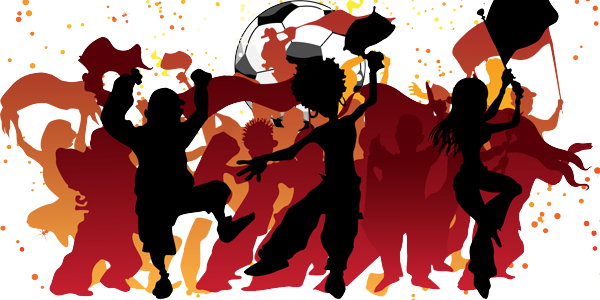
2021-05-28
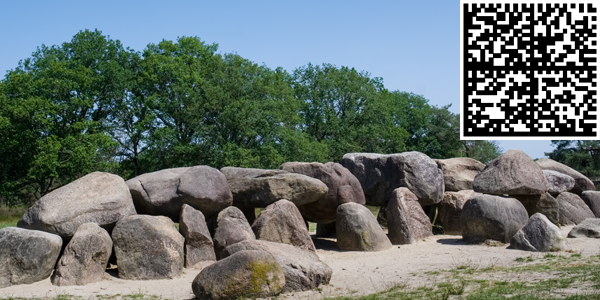
Our jolly traveling group of 8 Official FLAGSTACK Volunteers have been on a virtual tour for weeks - in May through the Kingdom of the Netherlands - and have brought you the highlights from the virtual sightseeing tour!
Today, on the very last stop of the entire virtual world trip, they not only take a virtual trip through the Netherlands, but right back into the past... In the Hunebedcentrum, the Hunebed Center, they meet the prehistoric people...!
The new Hunebedcentrum is located right next to the largest burial mound in the Netherlands - a masterpiece with its gigantic stones. This burial mound (with the number D27) is more than 22 meters long and built from stones with an individual weight of more than 20,000 kg. Imagine that these stones were pushed all the way there from southern Finland during an ice age about 150,000 years ago.... The burial mound is even older than the pyramids and Stonehenge!
The volunteers, and you too, discover the fascinating prehistory of the primeval province of the Netherlands, Drenthe. The journey covers five areas and starts with the ice ages that shaped this landscape. How did man use this landscape and live here for many thousands of years? A journey of more than 5,000 years into the past will take you to a time when our ancestors started farming and built barrows. Who were the builders of these mysterious monuments?
The museum shows their world, which consisted of small groups of houses and small fields, surrounded by wilderness with wolves, primeval cattle and bears. How did the barrow builders survive in this environment? You can't get any closer to prehistoric times than here in Borger!
In the Kenniscentrum (Knowledge Center) on the site of the Mound Center is the expedition gate of the UNESCO Geopark De Hondsrug. It explains what a Geopark is and why the Hondsrug area has been given UNESCO status. It is clearly shown that the area is part of a worldwide network of unique areas. Its history is linked to the people who settled here in the past and still live here today. The exhibition explains how the Hondsrug area was shaped by the ice ages and how all kinds of different peoples migrated to and settled in the area, from the Neanderthals and reindeer hunters to the barrow diggers and farmers of the Iron Age. You will discover stories, films, mammoth remains, special erratic boulders, an overview of the hotspots in Hondsrug and much more.
There is much more to discover at the prehistoric park. During a hike along the barefoot trail, the volunteers experience "on their own feet" how it feels to walk barefoot on natural materials, there is an idyllic butterfly garden where magnificent butterflies flutter around in spring and summer, and an archery range where they can shoot with bows and arrows under guidance. There are also picnic tables scattered around the grounds, where you can sit down and relax in the meantime.
In the largest rock garden of Holland thousands of boulders lie in motley disorder. The countless large and small stones were transported here in the ice during the penultimate ice age, about 150,000 years ago. At different erratic blocks there are boards with descriptions, which give an idea of the distances these stones have traveled during the ice age and how old they are. The names of these boulders are also noted there, such as Helleflint, Rapakiwi, Uppsala Granite, Gneiss etc. Some of them sound like fantasy names, but they are not at all: they are the official scientific names. All the rocks in the rock garden were collected by Jannes van Echten. He travelled through Drenthe for two years and collected all those boulders. The erratic blocks were given to him by the inhabitants of Drenthe, and the rock garden was created by the people of Drenthe. The volunteers walk through this unusual garden after the museum visit and are impressed by the long journey of the stones.
Overall, the volunteers have experienced impressive things and seen impressive places over the past few weeks - virtually, of course. They brought them directly home to you with the travel reports from Germany, Australia, the USA, the Czech Republic and the Kingdom of the Netherlands... Now it's time to relax and read the stories again. And have you already cooked the typical recipes?
Look forward to the next great campaign, we will tell you more about it soon...
Capture the flag
Your Team FLAGSTACK
PS:
Have you scanned the Friend Flag Code yet???
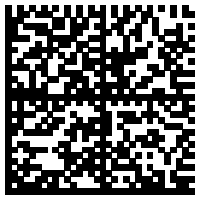
(Code Valid until 31.05.2021 - 23:59 Timezone FHQ / Europe / Berlin)
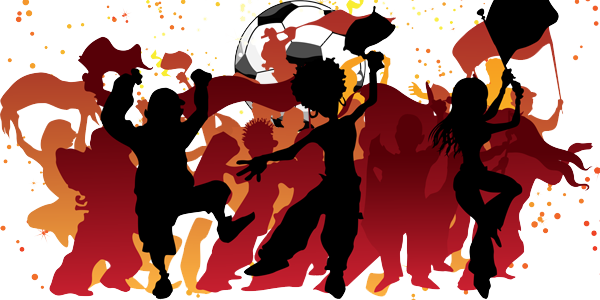
2021-05-26
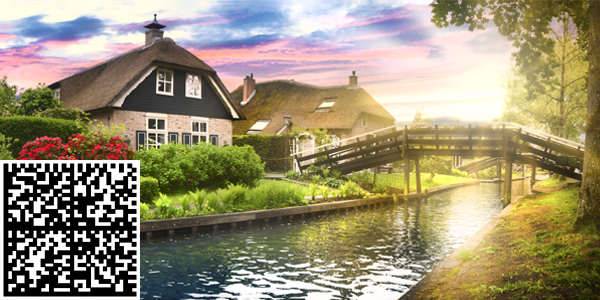
Our jolly travelling party of 8 Official FLAGSTACK Volunteers are going on their final virtual trip through the Kingdom of the Netherlands and take you on their virtual discovery tour! There are a total of 10 highlights to discover in May, read on to find out what the volunteers are experiencing...
After an exciting day in the metropolis of Amsterdam, the volunteers are spending another day in nature: in Venice... Well almost, they are virtually in Giethoorn, the Venice of the North!
When people in Giethoorn say that they came by boat, this is nothing unusual. The municipality of Giethoorn is not located on the Ijsselmeer or the North Sea, as you might expect, but in the other part of Holland in the province of Overijssel. The municipality nestles along a canal, from which a multitude of small canals branch off. It is therefore hardly surprising that Giethoorn is also known in the Netherlands as the "Venice of the North".
The properties of the small town are lined up in the form of small islands, with thatched farmhouses dominating the village scenery on their richly greened hills. High bridges connect the individual islands. The locals, however, prefer to travel by water. Their favorite vehicles are the so-called whisper boats - open, particularly quiet boats equipped with an easy-to-operate, environmentally friendly motor. The water village Giethoorn is located in the national park 'De Weerribben-Wieden'. The whole village is a sight in itself and along the canals are the thatched roof houses from the 18th and 19th centuries, as well as peat digger cottages and also some of the numerous museums in Giethoorn.
Giethoorn is almost 7 km long and has about 2620 inhabitants. Because of the amount of water around, there is of course not much space left and that is why the farmhouses were often built up in height, creating the characteristic camel roofs.
How did this extraordinary structure come into being? Long ago, peat diggers took peat from the ground, let it dry and later cut peat. During two great floods (1776 and 1825) these vulnerable dry banks were washed away and lakes were formed around Giethoorn. To transport the peat, they dug ditches and canals, which led to the typical village structure of Giethoorn. The traditional transport for Giethoorn is the handmade wooden "Gieterse Punter" (a small sailing boat). A whisper boat is the electric version of this.
Peat extraction continued to be of great importance for the region until 1920. Then the usable peat ran out and peat extraction was unprofitable. The local population gradually switched to reed and hay management. And aquatic and riparian plants were again grown along the shallow verve income station, which developed reed gardens.
Well, dear volunteers, watch out not to get your feet wet ;-) Enjoy the atmosphere and look forward to the next and final stop of the virtual FLAGSTACK world tour!
Capture the flag
Your Team FLAGSTACK
PS:
Have you scanned the Friend Flag Code yet???
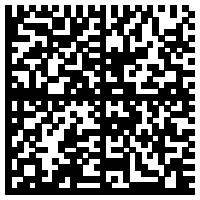
(Code Valid until 28.05.2021 - 21:00, Timezone FHQ / Europe / Berlin)
2021-05-24
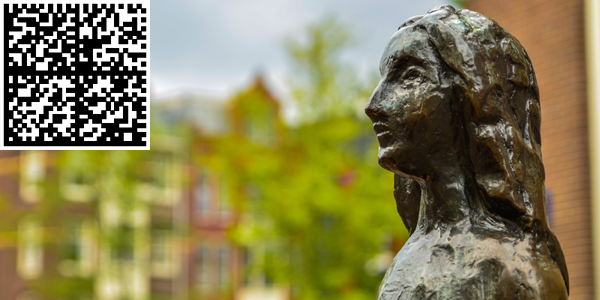
Our jolly travelling party of 8 Official FLAGSTACK Volunteers are going on their final virtual trip through the Kingdom of the Netherlands and take you on their virtual discovery tour! There are a total of 10 highlights to discover in May, read on to find out what the volunteers are experiencing...
Today the volunteers are spending their day right in Amsterdam, virtually of course, to see the Anne Frank House among other things....
The diary that the girl Anne Frank wrote in her hiding place in a back house in Amsterdam became posthumously world famous. It shows the forced life in secrecy, the fear of being discovered and the fate of the Nazi persecutees.
You could almost overlook the Anne Frank House, the narrow house is so inconspicuous in the western Amsterdam Jordaan district directly on the canals. But at the latest, the long queues of people at the house will draw your attention to it. Actually, it is no wonder that the house appears rather inconspicuous, as it was once a normal residential house. A Dutch family let the Frank family from Frankfurt am Main (Germany) stay there during the Second World War. They had fled to the Netherlands to escape the Nazis and initially felt safe there. But when the Netherlands surrendered to the German army, systematic persecution of Jews began there as well. Anne Frank and her family were initially able to hide in that very back house, but were then betrayed in 1944. All family members except for the father Otto Frank died.
The Anne Frank House is divided into two areas. The front house is the museum, which houses permanent and temporary exhibitions. They show the history of the Holocaust as well as the origins of National Socialism. They also go into detail about Anne Frank and her diary. The back house is the other part of the Anne Frank House. This is where the Frank family hid. The rooms have been preserved to this day as a memorial largely in their original form.
Immediately after the war, it was planned to demolish the house, as it was in danger of falling into disrepair. This was prevented by a foundation. The reward for the efforts of the foundation members is that the Anne Frank House is now one of the three most visited museums in Amsterdam.
You can reach the Anne Frank House quickly from the Central Station by turning west into the Jordaan district. Also, many canal cruises start and end right at the museum, so you can get off the boat at any of the stops and visit the Anne Frank House.
Above all, the Anne Frank House wants to educate and awaken, because something like the Holocaust should never happen again. The fate of the girl, who only lived to be 15, is just one of many.
And true to our motto of virtual travel, you can visit the house online: https://www.annefrank.org/en/museum/web-and-digital/
Capture the flag
Your Team FLAGSTACK
PS:
Have you scanned the Friend Flag Code yet???
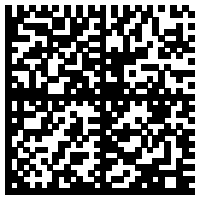
(Code Valid until 26.05.2021 - 21:00, Timezone FHQ / Europe / Berlin)
2021-05-22
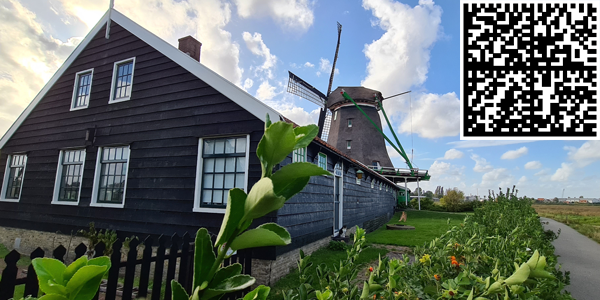
Our jolly travelling party of 8 Official FLAGSTACK Volunteers are going on their final virtual trip through the Kingdom of the Netherlands and take you on their virtual discovery tour! There are a total of 10 highlights to discover in May, read on to find out what the volunteers are experiencing...
Anything but cheese is this location, which the 8 volunteers report about today... It looks like an open-air museum - but it's not... A trip to the Zaanse Schans north of Amsterdam!
The authentic wooden houses and the beautiful mills give this area the impression of a museum. Far from it, because in the Zaanse Schans live and work ordinary people. They make sure that visitors can experience the industrial revolution for themselves. In the mills and the various workshops, craftsmen still do their work every day. Here, for example, there is the clog maker, the pewter caster, the cheese dairy or one of the artisan mills.
You can see a small grocer's store, a real historical Albert Heijn (from it arose a whole supermarket chain!) and also a bakery. In one of the windmills wood is sawn, in the others spices, oil or flour is ground. Dutch handicrafts are not neglected either. Small exhibitions, sometimes demonstrations, show how Delft porcelain is painted, liqueur distilled and stroop waffles baked. The typical Dutch wooden shoes, the clogs, have their own large barn dedicated to them, and of course there is also a cheese dairy where you can learn how real Dutch cheese is made. By the way, you don't have to worry about going home without a souvenir. The largest part of the museums in the Zaanse Schans is taken up by the sales rooms. Whether Delft porcelain, clogs or cheese, there is plenty of everything and in all variations and designs.
The name Schans reminds of the redoubt of the same name, which was built in 1574 by Diederik Sonoy, a governor under Willem I, Prince of Orange, against the Spanish invaders. In 1928, a mill museum (Zaans Molenmuseum) was established - initially in a residential building.
Between 1961 and 1974, many old buildings from the Zaanstreek were transported to the Zaanse Schans, rebuilt and restored to their original condition. The existing windmills on the site were restored, and others from the Zaanstreek were added. Also in later years, old buildings were placed there again and again.
Many ways lead to the Zaanse Schans: by car, boat, bus or bike you arrive here relaxed to experience a little time travel for one day. Imagine you have clogs on your feet... It's good that you can't stumble virtually - because walking in clogs also requires a little training ;-)
Capture the flag
Your Team FLAGSTACK
PS:
Have you scanned the Friend Flag Code yet???
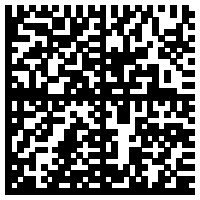
(Code Valid until 24.05.2021 - 21:00, Timezone FHQ / Europe / Berlin)
2021-05-20
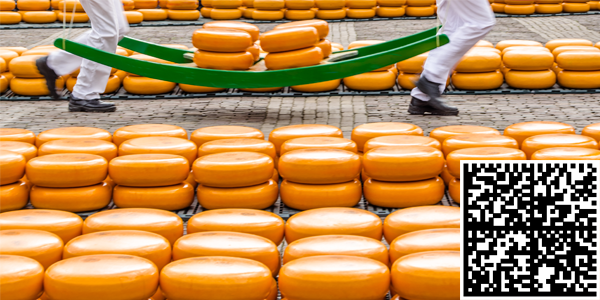
Our jolly travelling party of 8 Official FLAGSTACK Volunteers are going on their final virtual trip through the Kingdom of the Netherlands and take you on their virtual discovery tour! There are a total of 10 highlights to discover in May, read on to find out what the volunteers are experiencing...
The intense scent of flowers from Keukenhof is still in your nose... Today we smell a completely different aroma - the scent of the cheese market in Alkmaar!
The cheese market in Alkmaar is the best known of the five Dutch cheese markets, where local farmers have been selling their cheese since the Middle Ages. It takes place weekly on the Waagplein in Alkmaar for centuries, but today it is primarily a tourist event.
From April up to and including September, visitors can watch every Friday from 10 a.m. how the cheese is traded here according to centuries-old tradition. Already in the year 1365, when there was only one weighing pan, the cheese was negotiated on the Waagplein. Early in the morning, the cheese is delivered and the cheese market masters and traders check that the cheese loaves are stacked nicely. Up to 30,000 kilos, or 2,200 loaves lie lined up waiting for buyers.
Other historic cheese markets, which have existed since the Middle Ages, can be found in Edam, Gouda, Hoorn and Woerden. The cheese market in Alkmaar took off considerably during the Dutch Golden Age: in the sixteenth and seventeenth centuries, the Waagplein was enlarged eight times to accommodate the increasing volume of trade.
But what would the cheese market be without the 'kaasdragers', the cheese carriers. But also the 'zetters' (setters), 'ingooiers' (throwers) and 'waagmeesters' (weighers) determine the picture on the market. They belong to a guild with many traditions. In the Middle Ages, it was common for professional groups to join together in so-called guilds. The guild of cheese carriers was founded in 1593 and consists of 30 men and a cheese father. A cheese bearer can hold various positions. The cheese father is the head of the four bodies and can be recognized by his orange hat and cane. He is affectionately called 'Paps' by the cheese bearers.
Traditionally, the men come together on the Friday before Christmas to collect their pay. This consists of five euros "pay" for the cheese carrier, two filled cakes for the mother and for the wife to thank her for keeping her husband's suit spotless white, and white bread with butter and cheese for the children. Scuffles, smoking and alcohol are strictly forbidden in the cheese market. Swearing is also forbidden. Of course, it can happen that once a cheese rolls off the stretcher while being carried, but instead of cursing, the cheese carriers always shout the word 'Uil' (owl)! And if the cheese father forgets his cane or hat, the cheese carriers call after him, "Father, you're walking naked!"
The bell rings at 10 a.m. to start the cheese market. The negotiation of the price per kilo is still done by 'handshake': when haggling, people slap each other's hands and call out their price loudly. The final handshake seals the sale. After the purchase is agreed, the cheese sold is taken by the cheese carriers on a stretcher to the weigh house for weighing. The weighmaster, a municipal official, watches to make sure the buyer is charged the correct weight. When the cheese is sold and weighed, the cheese carriers carry the loaves across the market to the buyers' carts. The cheese is transported on a wooden stretcher, which hangs between the cheese carriers, and on which there are about 8 loaves of Gouda, each weighing 13.5 kg. Walking with such a heavy stretcher (25 kg), which weighs around 130 kg, requires a lot of practice. The cheese carriers have a special 'triple step' for this; a rehearsed walking rhythm that makes carrying easier. To a certain extent, they avoid walking in step, since this is how the stretcher hangs most steadily. Before the market closes at 1 p.m., the entire square must be 'cheese-free' again, so that all the street cafés can put their chairs back in place.
What a spectacle at a cheese market like this... Golden yellow and tasty greetings are sent to you by the volunteers...
Capture the flag
Your Team FLAGSTACK
PS:
Have you scanned the Friend Flag Code yet???
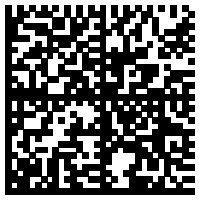
(Code Valid until 22.05.2021 - 21:00, Timezone FHQ / Europe / Berlin)
2021-05-18
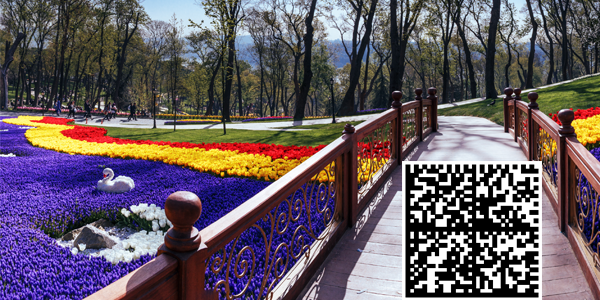
Our jolly travelling party of 8 Official FLAGSTACK Volunteers are going on their final virtual trip through the Kingdom of the Netherlands and take you on their virtual discovery tour! There are a total of 10 highlights to discover in May, read on to find out what the volunteers are experiencing...
From the miniature city of Madurodam, the volunteers continue on their virtual journey to other small highlights in large format: to the largest flower park in the world - the Keukenhof!
Tulips from Holland are famous all over the world. If you want to see the Dutch tulip fields in full bloom, you should visit Holland in April and May. Keukenhof can be reached within half an hour from The Hague, Haarlem, Leiden, Delft and Amsterdam. Keukenhof is a park where over 7 million bulbs are planted by hand every year. The gardens and four pavilions show a fantastic collection of: Tulips, Hyacinths, Daffodils, Orchids, Roses, Carnations, Irises, Lilies and many other flowers. You will be overwhelmed by the spectacle of colors and fragrances.
At Keukenhof you are surrounded by flowers everywhere. Spread over various gardens and pavilions you will find millions of tulips and other flowers. Every year the park has a new theme and therefore Keukenhof is always different. It is a unique park in the world, visited by over a million people every year. If you want to visit Keukenhof in real life, please note that the tulips only bloom from mid-March to mid-May. In summer the garden Kasteel Keukenhof is full of 150 different species of flowering dahlias. At the end of August, this is celebrated with the Keukenhof Dahlia Days, where all kinds of activities can be experienced. Until mid-October, the dahlias provide a stunning display of color in the park.
In the 15th century, the area where Keukenhof is located was still unspoiled nature and the property of Jakobäa of Bavaria. The estate was used by her to grow herbs for the castle kitchen. Hence the name Keukenhof (kitchen garden). In 1857, landscape architect Jan David Zocher senior, together with his son Louis Paul, drew up the garden plan for Keukenhof Castle (built in 1642). The English landscape garden he created then still forms the basis of the park today. In 1949, at the suggestion of a group of bulb growers, Keukenhof was established as a spring flower show to give them an opportunity to present their plants. From 1959, the park was also open to the public. In 2004, garden designer Jacqueline van der Kloet began using so-called confetti plantings, breaking up the symmetrical planting patterns previously used.
The 32-hectare park with 2,500 trees in 87 varieties is crossed by 15 kilometers of walking paths and has seven inspiration gardens with garden ideas for visitors. In addition, Keukenhof is also a large sculpture park with 150 works by 50 artists.
Can you smell the flowery greetings from Keukenhof that the volunteers send you?
Capture the flag
Your Team FLAGSTACK
PS:
Have you scanned the Friend Flag Code yet???
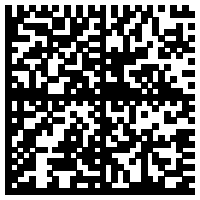
(Code Valid until 20.05.2021 - 21:00, Timezone FHQ / Europe / Berlin)
2021-05-16

Our jolly travelling party of 8 Official FLAGSTACK Volunteers are going on their final virtual trip through the Kingdom of the Netherlands and take you on their virtual discovery tour! There are a total of 10 highlights to discover in May, read on to find out what the volunteers are experiencing...
From a height, such as 100 meters from the Euromast, the world looks very small... At today's stop, the world is very small: in the miniature city of Madurodam in The Hague!
This is the ideal place to discover what makes Holland so unique. Canal houses, bulb fields, cheese markets, windmills, Peace Palace, Delta Works: the volunteers will find all this in Madurodam.
In just a few hours, the whole of Holland can be discovered here in one of the most visited theme parks.
In Madurodam, the miniatures and their stories come to life. There is much to see, experience and do. In a multimedia way, Madurodam tells the stories behind the miniature buildings and thus also about the history of Holland. In addition, Madurodam is interactive: you can operate the Oosterschelde storm surge barrier yourself, load a cargo ship with containers in the port of Rotterdam, have an airplane take off at Schiphol Airport and bid on a bouquet of flowers at the flower auction. At the indoor attraction De Waterwolf, the volunteers experience what it feels like to fight the water. You'll find a replica of the famous De Cruquius steam pumping station, which allows you to join other visitors in a spectacular show to fight the water and drain the immense Haarlemmermeer.
Through the video screens there is more about the stories behind the buildings that can be seen in Madurodam. For example, did you know how many flowers and bulbs are traded daily in Holland? The 'Madurodammertjes' tell a whole range of Dutch anecdotes, trivia and highlights. Madurodam offers a perfect combination of amusement park, historical heritage and beautiful nature. With over 5,500 miniature trees and 55,000 plants blooming throughout the season, the park is famous for its beautiful, atmospheric grounds.
Since its opening in 1952, Madurodam has been one of the most iconic attractions in all of Holland and is one of the top 5 most visited theme parks in the country. The park is the perfect day trip destination for visitors of all ages - and a great virtual recommendation from Sim1 and Borghuis for our volunteers!
The site, which covers an area of approximately 18,000 square meters, contains more than 300 models of the country's most important buildings, landscapes and technical objects on a scale of 1:25; many are animated. The Maduro family wanted to preserve the memory of their son, Lieutenant George Maduro, who died in the Dachau concentration camp in 1945, by creating the site in 1950 and officially opening it in July 1952.
We leave the volunteers alone for a while in this perfect little world and look forward to the next big story...
Capture the flag
Your Team FLAGSTACK
PS:
Have you scanned the Friend Flag Code yet???
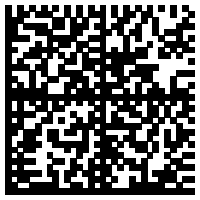
(Code Valid until 18.05.2021 - 21:00, Timezone FHQ / Europe / Berlin)